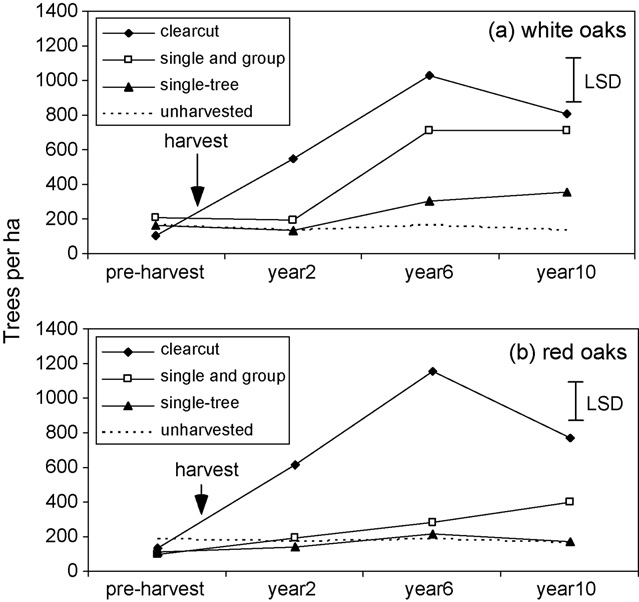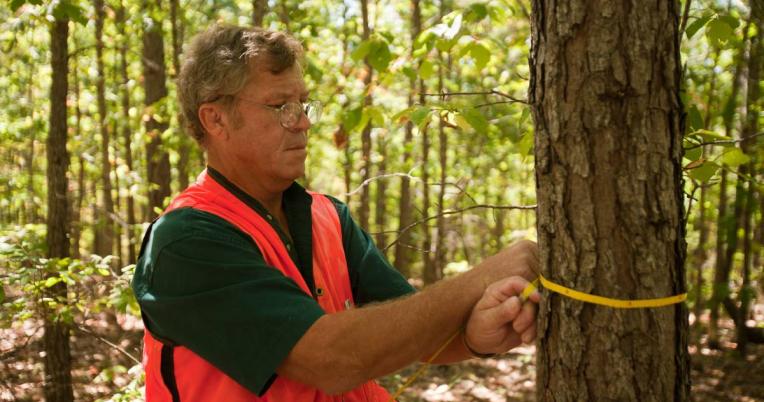Why we care
There are 15.5 million acres of forest in Missouri, which covers 34% of the state. Missouri’s forests support many species of bird, wildlife, and invertebrate species by providing habitat and food. Did you know that oak trees, our dominant tree species in Missouri, support the highest diversity of butterflies and moths? These butterfly and moths are a critical food source for our breeding bird species and are important pollinators.
Forest benefits are not limited to just birds, wildlife, and invertebrates; they provide many benefits to people as well. Forests contribute to local economies by providing wood products for buildings, railways, and much more! Forests also have many other essential functions. To name a few, forests store carbon, which helps regulate our climate, they create oxygen, they store and filter water, and their root systems prevent erosion and runoff.
Objectives
Evaluate the impacts of forest management on the composition and structure of woody trees, saplings, sprouts, and seedlings.
Project design
- Inventories are conducted on 648 half-acre vegetation plots, randomly placed across nine sites. These are the same vegetation plots used in the ground flora project.
- Trees, saplings, and woody regeneration are sampled in successively smaller nested subplots
- Sampling occurs in the dormant season every four years and in the years pre- and post-harvest.
Lessons learned
- In the 15-year interval between the first two harvests, tree basal area on even-aged and uneven-aged sites rebounded to nearly the level of no harvest sites.
- In the overstory of all sites, black oak and scarlet oak decreased while white oaks increased, indicating a potential compositional shift.
- Recruitment of red oaks into larger size classes is occurring only on even-aged sites, mostly localized to clearcuts.

- Recruitment of white oaks and hickories has occurred on both even-aged and uneven-aged sites, with white oak recruitment being highest in combination group- and single-tree selection areas and in clearcuts.
- The density of red maple seedlings increased on all sites.
- Harvesting on both even-aged and uneven-age sites accelerated the replacement of declining older trees by more vigorous young trees, which should enhance forest health.
Management Recommendations
- To promote red and white oak regeneration, reduce stand basal area to at least 25 ft2/acre and 45 ft2/acre, respectively.
- Red oak regeneration will be most successful on poorer quality sites and when advance regeneration density exceeds roughly 450 stems/acre.
- If relying on uneven-aged methods, group-selection harvests will result in higher densities of total regeneration and of white oak regeneration than will single-tree selection harvests.
- To promote shortleaf pine regeneration, additional treatments will be required to prepare the seedbed and to control competing hardwood vegetation.
- Monitor red maples during the seedling-to-sapling transition; on higher quality sites the species may maintain a competitive advantage.
Woody Vegetation Publications (PDF, 154 KB)
List of all publications resulting from the MOFEP Woody Vegetation project.
Published on Apr 18, 2022 -
